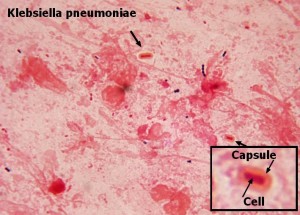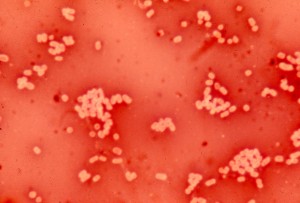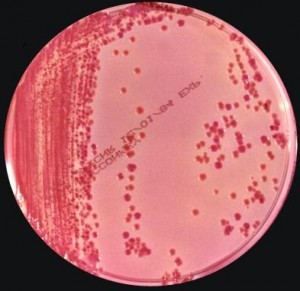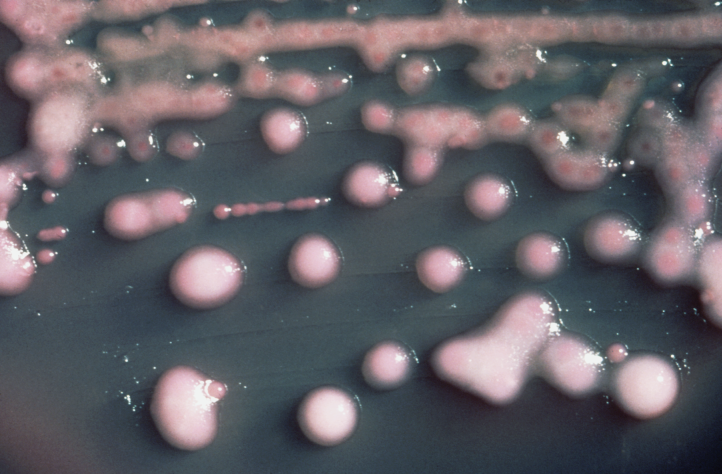Klebsiella pneumoniae is the specific name of a bacterium that is capable of causing serious illness, especially pneumonia, as the name suggests, in susceptible people. Klebsiella bacteria are found in several areas of the human body, especially in the intestinal tract, where they do not cause disease, but when circumstances allow, they can be very damaging, causing a range of infections, including, but not limited to: pneumonia (as mentioned), urinary tract infections, septicemia, meningitis, and soft tissue infections. Unfortunately, some strains K. pneumoniae are quite virulent and can even prove fatal, but this almost always happens in patients already debilitated due to other causes, and fortunately these extreme outcomes are rare.
Normal Bacteria
K. pneumoniae normally behaves as a harmless inhabitant of the human gut. As long as K. pneumoniae are behaving as such so-called “normal flora” they can be important contributors to our intestinal and overall health. Bacteria of this type may perform many useful functions, perhaps including aiding in the digestion of nutrients and the elimination of waste. And, as long as regular and harmless bacteria are occupying intestinal space, it makes it more difficult for harmful species, such as Clostridium difficile, which almost always strikes due to antibiotic therapy, to cause potentially serious infections and illnesses.
Antibiotic Basics
As is true of any medication or drug, antibiotics, when misused, can cause serious illnesses. It is critical that antibiotics be used properly and completely, even if you feel better quickly. They should also only be used when prescribed by a licensed physician and dispensed by a pharmacist. Generally speaking, it is a bad idea to purchase medications on your own, especially when out of the country or over the Internet. It is critical to be certain that the cause of an illness is actually bacterial, not viral, as antibiotics are useless against viral infections.

Pathogenic K. pneumoniae
As noted, K. pneumoniae, can be harmless when limited to the intestinal tract. However, K. pneumoniae is a major and common cause of infections including blood-borne systemic sepsis infections among patients in the healthcare-setting, including long-term care facilities. These types of infections are termed “nosocomial,” meaning they were acquired in the healthcare setting. These types of infections most commonly occur in people who have been hospitalized for a long period of time, who have indwelling devices such as blood or urinary catheters, and who are debilitated by other illnesses, especially cancer, as well as those who are of advanced age.

The Emergence of Resistance
The majority of infections and illnesses caused by K. pneumoniae used to be easily resolved with relatively common antibiotics, but as has been the case with other similar organisms in recent years, K. pneumoniae has developed resistance to many common antibiotics. Unfortunately, K. pneumoniae has even been able to become resistant to some of the most powerful and recently developed antibiotics, including the beta-lactam group. More frighteningly, even medications such as the carbapenems, antibiotics of last resort, may fail to treat some infections caused by K. pneumoniae. Such resistance is almost certainly due to the widespread overuse and misuse of powerful antibiotics. The proper diagnosis of any infection and the correct selection of antibiotics is necessary like never before to prevent further antibiotic resistance from developing. Microbiological analysis will detect infections with K. pneumoniae and can also be used to identify the most effective and conservative means of treating the infection.

K. pneumoniae in the Environment
Infections with K. pneumoniae, including resistant species, are usually the result of the introduction of the organism into the body from an environmental source, which could include catheters, other invasive equipment, or a caregiver, although community acquired cases have now been identified in some parts of the world, especially amongst those with alcohol problems. The environmental presence of K. pneumoniae clearly indicates contamination. It is ideal, if not essential, to eliminate such contamination in a wide variety of settings including, but not limited to: hospitals, nursing facilities, schools, gyms, physical therapy clinics, doctor’s offices, and homes.
Elimination and Control
Fortunately, despite the potential resistance to antibiotics and the widespread nature of K. pneumoniae, such contamination can be easily controlled through the use of a member of the Mold-Stat family of products. The MoldStat product line is EPA certified and registered as effective against K. pneumoniae, including antibiotic resistant strains. This is often untrue of many other cleaners and disinfectants available for use in both the household and the healthcare settings.

